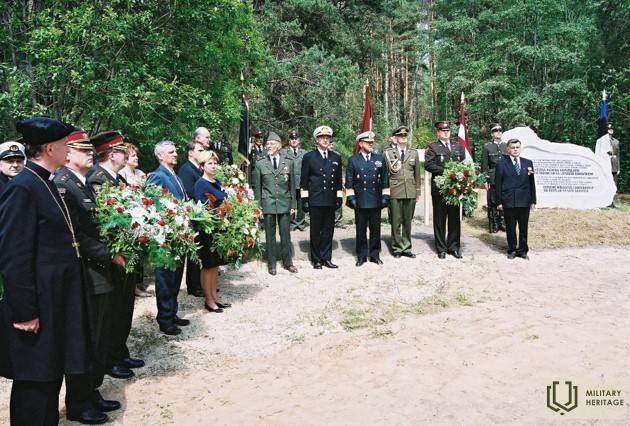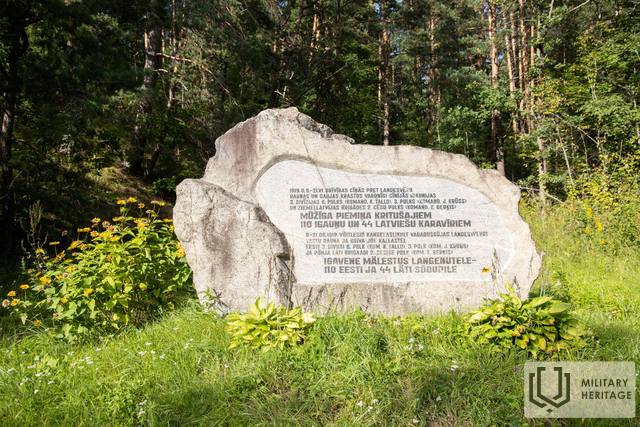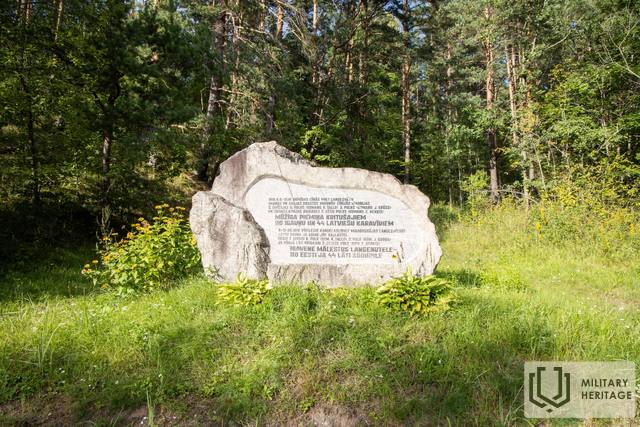Memorial stone in the battles of Cēsis near the fallen Latvian and Estonian soldiers
Memorialinis vieta


 97
97




Located in Priekuli Parish, on the side of the Cēsis-Valmiera highway near the bridge over Rauna.
A memorial stone with a granite memorial to the soldiers killed in the battles of Cēsis, made by stonemason Voldemārs Koltovs, can be seen.
Discovered in 2004, when the 85th anniversary of the Battle of Cēsis was celebrated.
A memorial stone to 110 Estonian and 44 Latvian soldiers killed in battles on the banks of the Rauna and Gauja banks.
The 6th Regiment of the 3rd Estonian Division (Commander K.Tallo), the 3rd Regiment (Commander J. Krūss) and the 2nd Cēsis Regiment of the Northern Latvia Brigade (Commander K.Berķis) fought heroically in the battles near Rauna and Gauja.
Panaudoti šaltiniai ir literatūra:
https://karavirukapi.blogspot.com/2019/07/priekulu-pagasta-pie-tilta-par-raunu.html
http://visit.priekuli.lv/objekts/piemineklis-cesu-kaujas-kritusajiem-latviesu-un-igaunu-karaviriem-pie-tilta-par-raunu/
Susijusi laiko juosta
Susijusios temos
Susijusi istorija
Cėsių mūšio pradžia, eiga ir pabaiga
Pergalei Cėsių mūšyje buvo lemta tapti lūžiu latvių ir estų kovoje už savo šalies nepriklausomybę. Ši pergalė padarė tašką Andrievo Niedros vyriausybės ir vokiečių generolo Rüdigerio von der Goltzo planams užkariauti Baltijos šalis. Vietoj to Liepojoje savo veiklą atnaujino Laikinoji Latvijos vyriausybė, vadovaujama Kārlio Ulmanio.








